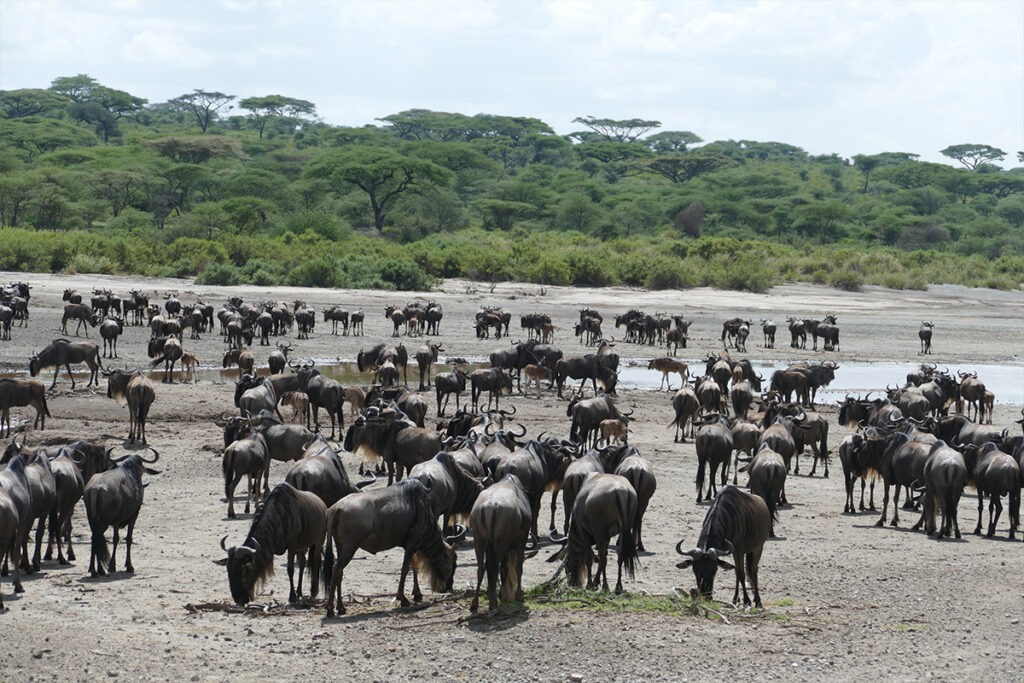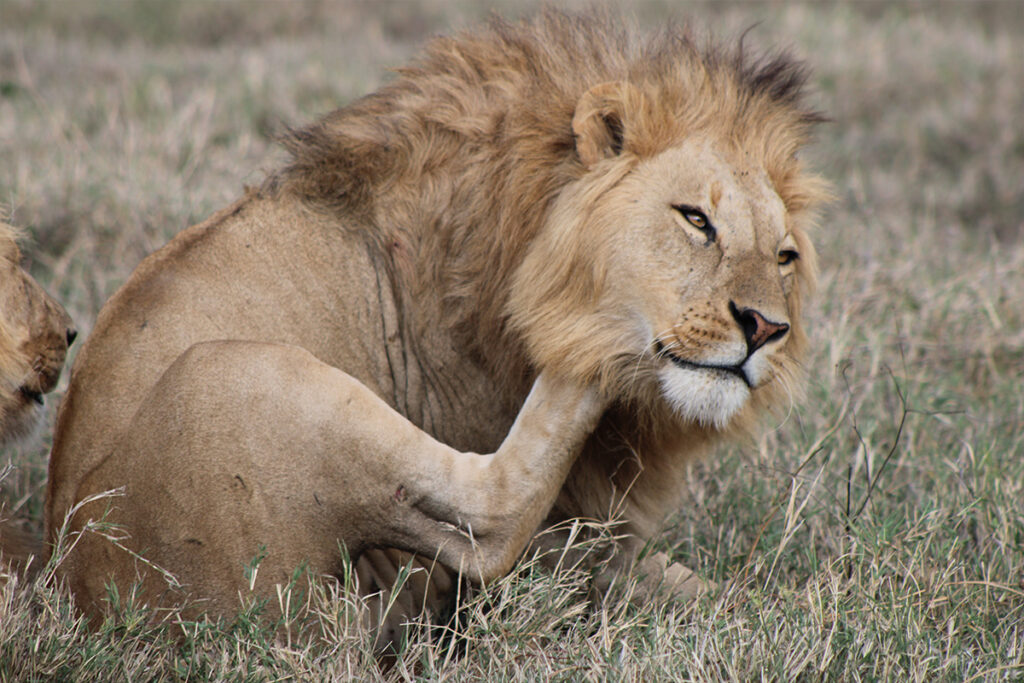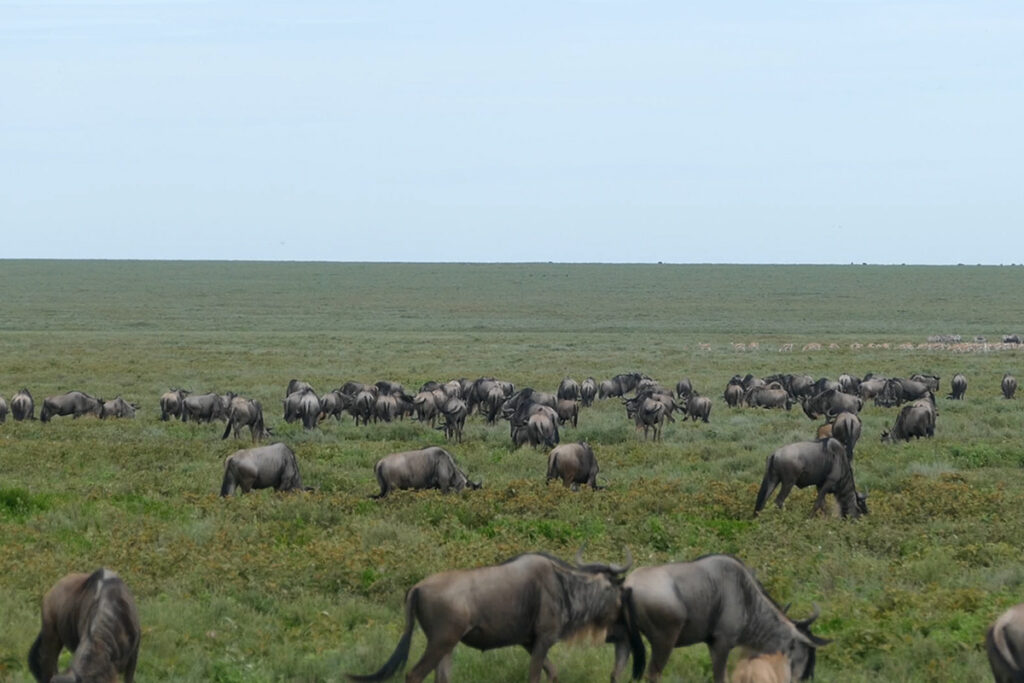What if I told you that January, a month often associated with freezing temperatures in many parts of the world, is actually the perfect time for a safari in Tanzania? During this period, Tanzania’s climate is warm and pleasant, providing ideal conditions for exploring its renowned national parks. The lush landscapes breathe life into the epic wildlife spectacles, creating unforgettable experiences for those seeking adventure.
When considering a Tanzania safari in January, it’s essential to recognize the significance of this time of year. January falls within the short dry season, which makes wildlife spotting remarkably effortless, as animals gather around water sources. Additionally, this month coincides with the calving season of the Great Migration, where thousands of wildebeest give birth, offering an extraordinary opportunity to witness one of nature’s most miraculous events. The combination of climate, wildlife activity, and breathtaking scenery make January the prime time for an exhilarating Tanzanian safari.

Benefits of Tanzania Safari in January
January is a fantastic month for going on a safari in Tanzania. The weather is warm and dry, which makes it easier to spot wildlife since animals gather near water sources. This month also marks the calving season for the Great Migration, with thousands of wildebeest giving birth. Witnessing this incredible event is a unique experience that many nature lovers cherish. According to here is the article, the lush green landscape during this time adds breathtaking beauty to the adventure.
The favorable weather conditions in January make it a pleasant time to explore the national parks in Tanzania. With fewer tourists compared to peak seasons, you can enjoy a more intimate and personalized safari experience. Less crowded safari tours allow for better photo opportunities without jostling for space. Additionally, the cooler mornings and evenings create a comfortable environment for exploring. This balance of weather and wildlife activity makes January enticing for adventurers.
Visiting Tanzania in January offers remarkable opportunities not found at other times of the year. You can witness the birth of prey animals, which in turn attracts numerous predators like lions and leopards. This natural interaction is thrilling to observe, offering a raw and real portrayal of the circle of life. A safari during this time also means staying in camps and lodges with stunning views. According to this post, the rich biodiversity and beautiful scenery make each day of the safari an adventure.
There are several national parks that are ideal for visiting in January. Serengeti National Park is famous for the Great Migration and vast predator population. Ngorongoro Crater is another excellent location, offering a chance to see the Big Five in one of the world’s largest volcanic calderas. Tarangire National Park is known for its large elephant herds and baobab trees. To maximize your experience, it’s beneficial to plan a mix of activities. Exploring different parks provides a well-rounded safari adventure, making your visit memorable and rewarding.
Excellent Wildlife Viewing
Tanzania is renowned for its incredible wildlife viewing, a key highlight of any safari visit. In January, you’ll observe a diverse range of animals gathered near water sources. This natural congregation makes it easier to see various species, from majestic elephants to playful zebras. Watching these animals interact in their natural habitat is both exciting and educational. It’s an incredible opportunity to learn about wildlife behavior up close.
January is also the peak time for witnessing the Great Migration’s calving season. Thousands of wildebeests give birth to their young, attracting predators like lions and hyenas. The sight of young wildebeests taking their first steps is awe-inspiring and captivating. This adds drama and intensity to the safari, as the circle of life unfolds before your eyes. Seeing these natural events live is an unforgettable experience.
Exploring Tanzania’s national parks provides a variety of wildlife experiences. Serengeti National Park is famous for its wide-open plains and abundance of animals. Ngorongoro Crater offers a chance to see the Big Five, including the elusive leopard. The crater’s enclosed environment makes wildlife spotting feel like discovering a hidden world. Each park provides its own unique perspective on Tanzania’s rich biodiversity.
The excellent wildlife viewing in Tanzania is not just about seeing animals; it’s about understanding ecosystems. Observing species like giraffes, hippos, and rhinos helps grasp how they fit into the environment. This deeper understanding enhances any safari experience, turning it into a meaningful adventure. With a knowledgeable guide, you’ll learn fascinating facts about these creatures. It’s an educational journey through one of the world’s most vibrant environments.
Great Migration Calving Season
The Great Migration Calving Season in Tanzania is a spectacular sight, especially in January. This period marks the arrival of thousands of newborn wildebeests on the Serengeti plains. It’s a breathtaking event, as tiny calves learn to walk and run shortly after birth. The abundance of young wildebeests draws attention from predators like lions and cheetahs. Watching these interactions offers a thrilling glimpse into nature’s survival dynamics.
During this time, the Serengeti becomes a hive of activity, with wildebeest herds spread across the lush grasslands. The calving season typically sees around 8,000 newborns a day. This sudden influx of life provides essential sustenance for predators, maintaining the ecosystem’s balance. Calves face immediate challenges, such as avoiding predators and learning from older herd members. It’s a fascinating circle of life.
The calving season also impacts other wildlife in the region. Predators, including hyenas and leopards, take advantage of the vulnerable newborns. Raptors like vultures circle overhead, ready to swoop in. The increased predator presence adds another layer of drama to the spectacle. For any visitor, witnessing these interactions is a rare and captivating experience.
Spectators of this natural event often describe it as moving and unforgettable. Beyond the immediate action, it provides insight into migration patterns and ecological processes. Guides offer valuable knowledge on how this season affects the broader ecosystem. Their expertise helps visitors appreciate the intricacies of these natural processes. The Great Migration Calving Season becomes more than a visual spectacle; it’s an educational journey into nature’s wonders.
Pleasant Weather Conditions
One of the key attractions of visiting Tanzania in January is its pleasant weather conditions. The short dry season during this month makes the environment perfect for exploring. Daytime temperatures are generally warm, averaging between 25°C to 30°C (77°F to 86°F). This allows travelers to comfortably enjoy outdoor activities without the discomfort of extreme heat. With minimal rainfall, wildlife viewing opportunities are notably enhanced, as animals gather around scarce water sources.
Since the mornings and evenings are cooler, they’re ideal for game drives. Tourists can explore the picturesque landscapes and marvel at the diverse wildlife in comfort. This friendly climate also means less mud, making roads and pathways easy to navigate. Visitors can focus on the safari experience without dealing with weather-related hassles. Such conditions are a welcomed relief compared to the wet season.
The clear skies typical of January contribute to spectacular views and vibrant scenery. Photographers find these conditions ideal for capturing stunning images. Vivid sunrises and sunsets become memorable moments shared during the trip. Lush environments, highlighted by bright sunshine, showcase Tanzania’s natural beauty. For many, the perfect weather serves as an ideal backdrop for creating unforgettable memories.
Beyond its impact on safari activities, the pleasant weather benefits travel logistics. Flights and travel plans face fewer delays due to clear conditions. Accommodations, too, provide a more enjoyable stay without the need for excessive weatherproofing. The stable climate allows tourists to pack lightly, focusing on essentials rather than heavy rain gear. Altogether, these factors make January a convenient time for adventure seekers.
Few other times of year present such favorable conditions for wildlife adventures. Whether viewing the great migration or exploring Serengeti, pleasant weather enhances engagement and enjoyment. Nature is at its grandest display, welcoming explorers eager to immerse themselves in Tanzania’s wonders. It’s a unique opportunity for incredible experiences. Experiencing Tanzania’s landscapes in January leaves a lasting impression.
What to Pack for Tanzania Safari in January
When packing for a safari in Tanzania in January, it’s important to consider the climate and activities. Lightweight clothing is essential due to the warm daytime temperatures. Choose breathable materials like cotton to stay comfortable on long game drives. During evenings and mornings, temperatures can drop, so include layers such as a jacket or sweater. Having versatile clothing helps adapt to changing conditions throughout the day.
Footwear is another critical aspect of your packing list. Bring sturdy walking shoes or boots suitable for hiking and exploring rugged terrain. These will keep your feet safe from rough or uneven ground, enhancing comfort and mobility. A pair of sandals or comfortable shoes for use around lodges is also recommended. Prioritizing comfort ensures you enjoy every aspect of your safari journey.
Accessories play a vital role in your safari experience. Sun protection is a must, so pack a hat, sunglasses, and sunscreen to guard against the strong African sun. Consider including a lightweight scarf to protect against dust on open vehicle rides. Binoculars allow for better wildlife viewing from a distance. These essentials keep your safari enjoyable and healthy.
You’ll also want to bring a well-stocked daypack for daily excursions. Items such as a reusable water bottle, snacks, and travel documents should be readily accessible. A small first aid kit, camera equipment, and extra batteries might also be beneficial. Ensuring these items are within reach adds convenience and security to your adventures. Organization is key to a smooth safari experience.
Finally, don’t forget important documents and travel essentials. Make sure to have your passport, visa, and any necessary vaccination records. Travel insurance papers and lodge confirmations should also be on hand. Keeping these documents organized in a waterproof bag is advisable. Being well-prepared with essential paperwork ensures stress-free travel.
Best National Parks to Visit in January
January is a fantastic month to explore Tanzania’s national parks. Serengeti National Park is a must-visit, especially for witnessing the Great Migration. This world-famous park offers endless opportunities to see large herds of wildebeest, zebras, and predators. The vast plains provide excellent conditions for photography and exploration. Visitors can immerse themselves in one of nature’s greatest spectacles.
Ngorongoro Crater, another jewel of Tanzania, is perfect for experiencing the Big Five. The crater’s unique ecosystem houses lions, elephants, rhinos, buffaloes, and leopards. This makes it a top destination for wildlife enthusiasts. In addition to the animal life, the scenic beauty and lush landscapes are captivating. Exploring the crater offers an unforgettable adventure.
Lake Manyara National Park is smaller but packs a punch with its diverse wildlife and breathtaking views. It’s famous for its tree-climbing lions and stunning flamingo populations. Visitors can enjoy observing elephants, giraffes, and baboons in the park’s vibrant setting. The picturesque lake and dense forests create a serene environment. This makes Lake Manyara a delightful stop in January.
Tarangire National Park is known for its large elephant herds and iconic baobab trees. The park truly shines during the dry season, as wildlife congregates around the Tarangire River. Visitors can witness thrilling scenes as animals quench their thirst. The beautiful landscape is a haven for bird watchers too, with over 550 species recorded. Tarangire offers a rich and rewarding safari experience.
Selous Game Reserve is off the beaten path, providing a more secluded experience. It’s one of the largest protected areas in Africa, renowned for its diverse ecosystems. From boat safaris to walking tours, there are plenty of activities to enjoy. The chance to see African wild dogs and big game makes Selous appealing to adventurous travelers. Its tranquil beauty offers a peaceful retreat from the usual safari crowds.
Important Tips for Tanzania Safari in January
Planning ahead is crucial for a successful safari in Tanzania during January. January is part of the peak season, so booking accommodations and tours early is wise. This ensures you get preferred lodges and guides without the risk of everything being fully booked. Look out for package deals that might offer better rates when booked in advance. Early planning will enhance your overall experience.
Packing smartly can make a big difference on your trip. Bring light clothing suitable for warm weather, but also include layers for cooler mornings and evenings. A hat and sunscreen are essential to protect yourself from the sun’s rays throughout the day. Don’t forget essentials like binoculars for wildlife viewing and a good camera to capture memories. Having an efficient packing list helps keep you prepared.
Learning about local culture enhances your safari experience significantly. Take time to understand basic Swahili phrases or customs before your trip; this fosters positive interactions with locals. Respecting cultural traditions enriches relationships and adds depth to your adventure. Engage with communities if possible, as their stories and experiences can provide unique insights into Tanzanian life. Being aware makes your journey more meaningful.
Staying healthy while on safari should be a priority as well. Drink plenty of water to stay hydrated under the African sun, and use insect repellent to ward off mosquitoes at dusk and dawn. Anti-malarial medication could be considered after consulting with a healthcare professional before travel. Eating local cuisine is delightful, but ensure it’s prepared hygienically to avoid stomach issues. These precautions ensure you feel great throughout the trip.
Maximize each moment by following seasoned guides’ advice on spotting wildlife or exploring parks carefully—listening attentively leads to extraordinary discoveries! Avoid loud noises that may scare animals away; silence amplifies nature’s sounds beautifully instead! Morning game drives often showcase active animals starting another day’s adventure too! Embrace every sighting eagerly—it shapes unforgettable memories lasting forevermore!. Expert tips transform ordinary days into extraordinary ones!

Frequently Asked Questions
Exploring Tanzania’s wildlife in January is a captivating experience filled with adventure and discovery. These FAQs offer insights and tips for maximizing your journey.
1. Why is January a good time for a safari in Tanzania?
January is part of Tanzania’s short dry season, creating optimal conditions for wildlife viewing. With dry weather, animals are often found near water sources, making sightings more frequent and diverse. This time also coincides with the Great Migration’s calving season, introducing thousands of newborns to the Serengeti.
The lush landscapes and cooler morning temperatures enhance the safari experience. Travelers often find fewer crowds, allowing a more personalized encounter with Tanzania’s natural beauty. The combination of favorable climate and vibrant wildlife activity makes January an excellent choice for adventure seekers.
2. What should I pack for a Tanzania safari in January?
Packing the right items ensures a comfortable and enjoyable safari experience. Lightweight, breathable clothing is key due to warm daytime temperatures. Include layers, such as a jacket, for cooler mornings and evenings. A hat, sunglasses, and sunscreen will protect you from the strong African sun.
Don’t forget sturdy walking shoes for exploring and a pair of sandals for relaxing at lodges. Binoculars are essential for viewing distant wildlife, and a good camera captures your adventure. Packing smartly contributes to a hassle-free trip.
3. Which national parks are best to visit in Tanzania during January?
The Serengeti National Park is a must-see in January due to the Great Migration and vibrant predator activity. Ngorongoro Crater offers impressive wildlife diversity and stunning landscapes, including the chance to see the Big Five. Lake Manyara is known for its tree-climbing lions and picturesque flamingo sightings.
Tarangire National Park stands out for its large elephant herds and iconic baobab trees. Selous Game Reserve provides a more secluded experience with diverse ecosystems and unique wildlife encounters. Visiting these parks ensures a well-rounded and extraordinary safari adventure.
4. How do I protect myself from the sun during a safari?
The sun in Tanzania can be intense, so taking precautions is crucial. Wear a wide-brimmed hat to shade your face and neck. Sunglasses with UV protection are essential for eye safety. Generously apply sunscreen of at least SPF 30 to exposed skin, reapplying throughout the day.
Lightweight, breathable clothing covering your arms and legs offers additional protection. Bring a scarf to shield your neck and face from the sun when needed. Staying hydrated is also vital in managing heat exposure during your safari adventures.
5. Are there any cultural tips I should know for traveling in Tanzania?
Understanding local customs enhances interactions with Tanzanians and enriches your travel experience. Learning basic Swahili greetings shows respect and builds rapport with locals. Dress modestly, especially in rural areas and villages, to align with cultural norms.
When visiting local communities, be polite and observant of social rules. Ask permission before taking photographs of people. Respect for tradition and embracing local practices will lead to meaningful exchanges and memorable moments on your safari journey.



